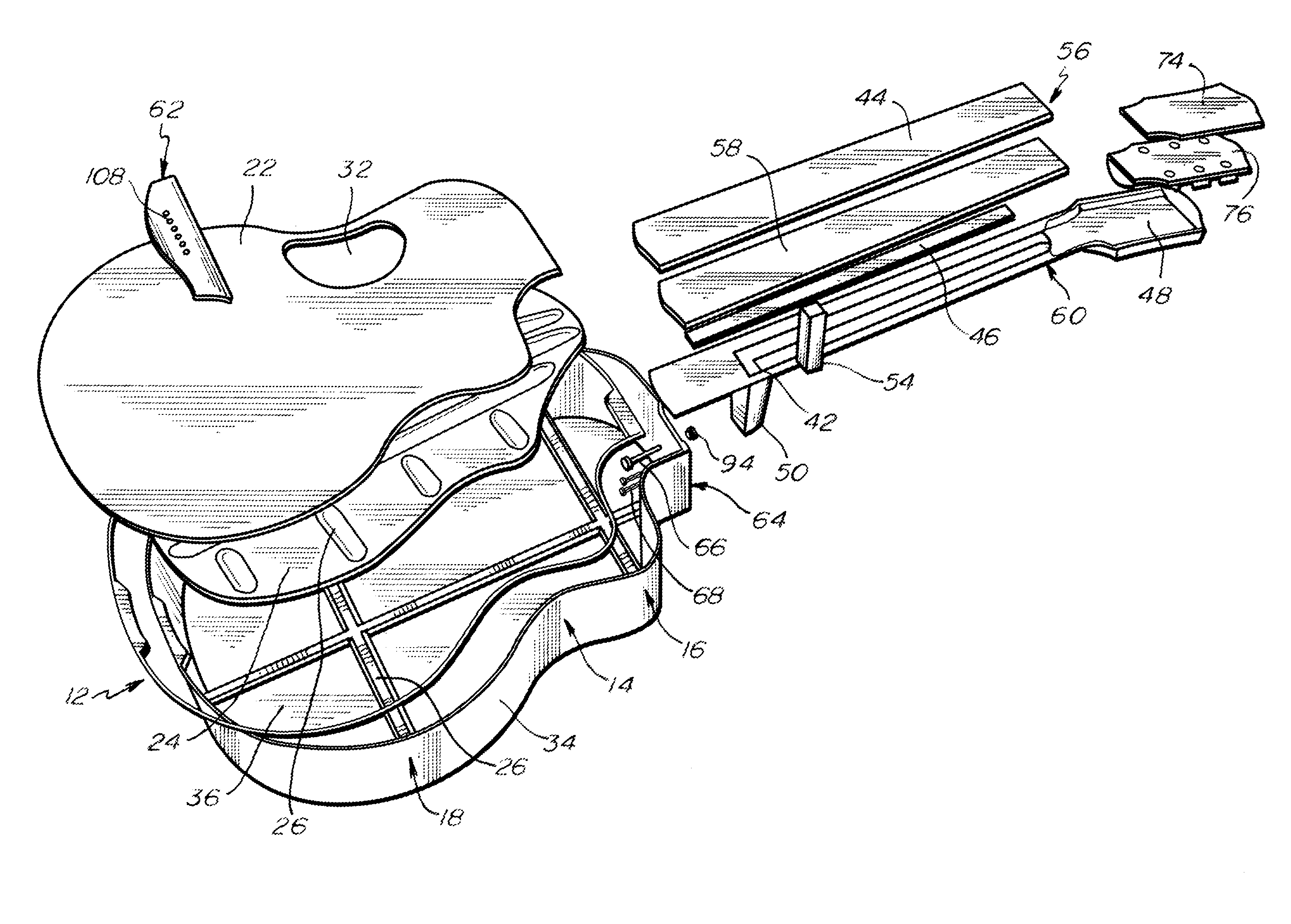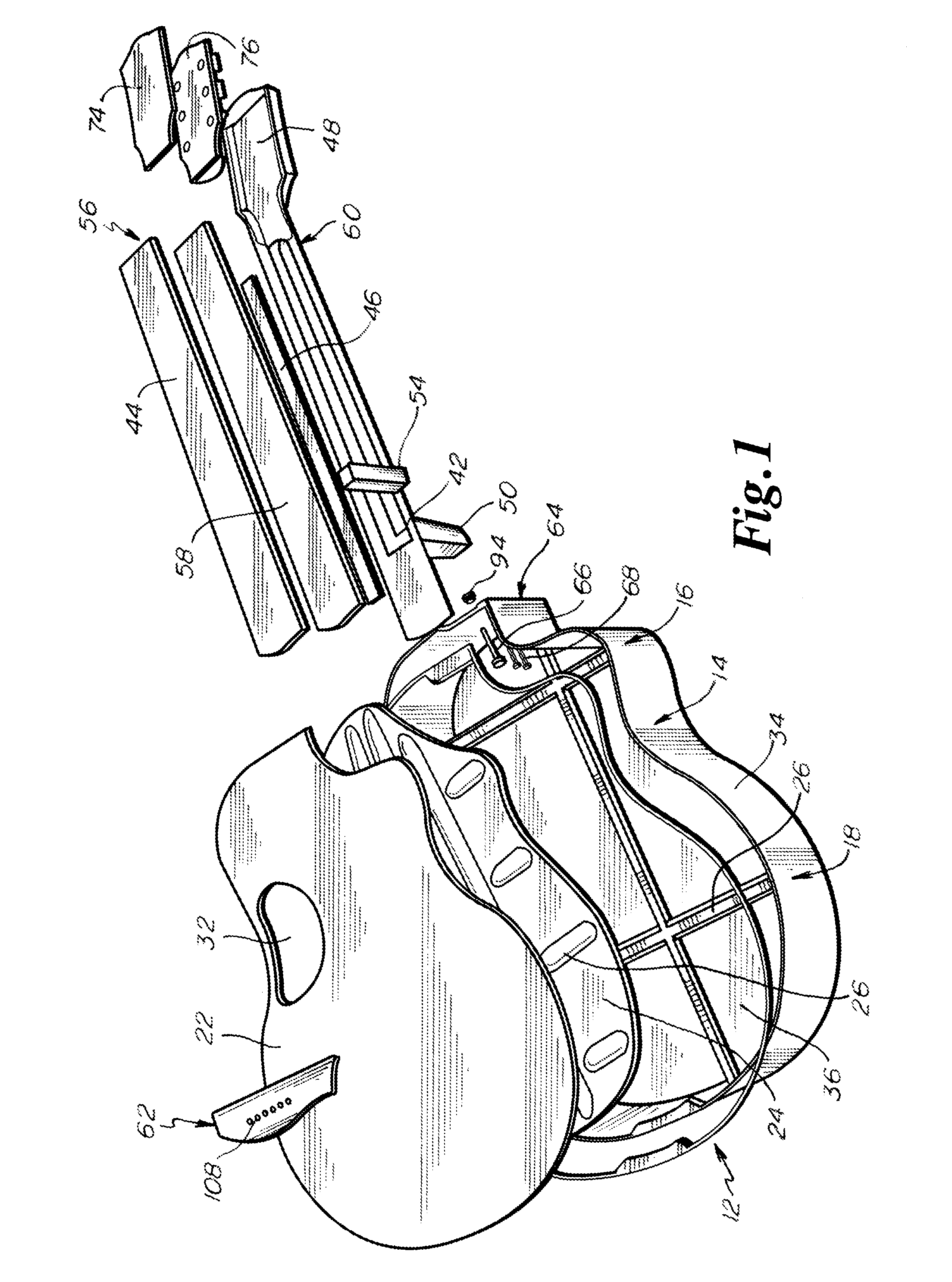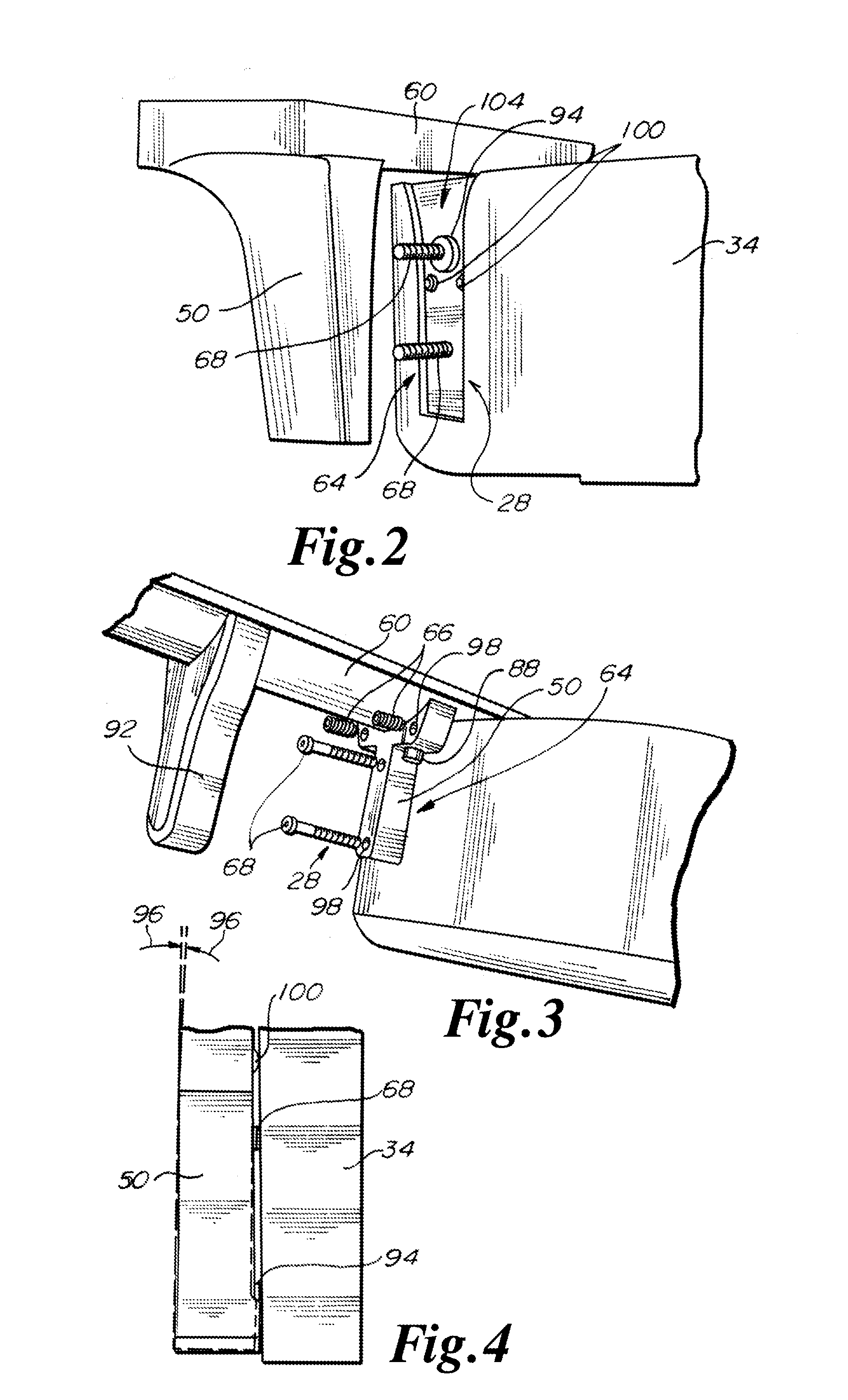Carbon Fiber Guitar
a guitar and carbon fiber technology, applied in the field of stringed instruments, can solve the problems of inability to achieve the warmth of wood, lack of acoustic characteristics of wood, and metallic instruments, etc., and achieve the effect of increasing the consistency of stringed instruments, reducing costs, and preserving desired strength
- Summary
- Abstract
- Description
- Claims
- Application Information
AI Technical Summary
Benefits of technology
Problems solved by technology
Method used
Image
Examples
first embodiment
[0170]In a second alternative embodiment the neck section is hollow and at least one fiber neck insert is disposed in said hollow neck section.
[0171]In a third alternative embodiment according to the first embodiment said fingerboard comprises a molded pocket and said at least one fiber insert is disposed in said molded pocket.
[0172]In a fourth alternative embodiment according to the first embodiment said at least one fiber insert comprises at least one of carbon fiber, carbon fiber and resin, carbon fiber and plastic, and carbon fiber and resin and plastic.
[0173]In a fifth alternative embodiment according to the first embodiment the neck further comprises an injection molded fiber headstock insert engaged to said headstock section and a headstock veneer engaged to said headstock insert.
[0174]In a sixth alternative embodiment according to the first embodiment said neck is connected to a sound box comprising a soundboard, a bracing structure, a side wall, and a bottom wall.
sixth embodiment
[0175]In a seventh alternative embodiment said sound box or said neck are formed composite materials selected from the group consisting of carbon fibers, glass fibers, reinforcing fibers, aramid fibers, and a matrix resin such as epoxy or polyester and combinations thereof.
[0176]In an eighth alternative embodiment according to the sixth embodiment the neck further comprises an adjustable attachment mechanism constructed and arranged to adjustably attach said neck to said sound box in a vertical direction and in a horizontal direction.
eighth embodiment
[0177]In a ninth alternative embodiment said attachment mechanism comprises a pivot positioned between the heel section and the sound box.
[0178]In a tenth alternative embodiment according to the sixth embodiment the neck further comprises an injection or compression molded bridge engaged to said soundboard, said bridge comprising a lower side comprising a plurality of pockets.
PUM
| Property | Measurement | Unit |
|---|---|---|
| fiber content | aaaaa | aaaaa |
| fiber content | aaaaa | aaaaa |
| stiffness | aaaaa | aaaaa |
Abstract
Description
Claims
Application Information
 Login to View More
Login to View More - R&D
- Intellectual Property
- Life Sciences
- Materials
- Tech Scout
- Unparalleled Data Quality
- Higher Quality Content
- 60% Fewer Hallucinations
Browse by: Latest US Patents, China's latest patents, Technical Efficacy Thesaurus, Application Domain, Technology Topic, Popular Technical Reports.
© 2025 PatSnap. All rights reserved.Legal|Privacy policy|Modern Slavery Act Transparency Statement|Sitemap|About US| Contact US: help@patsnap.com



